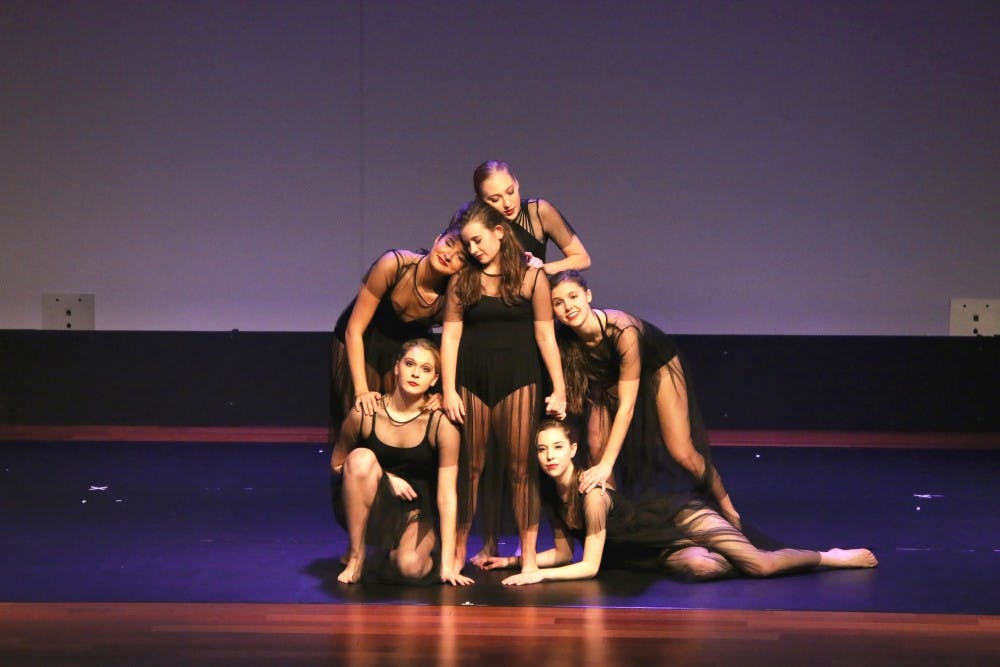The stage in Wilks Theater stood empty aside from soft purple and blue lights. A moment later it was bursting with artistic movements, monochromatic costumes and climbing piano music.
Miami University Dance Theatre hosted its annual winter concert on December 2-3. The show included eight dances and a finale, choreographed by students, guest choreographers and directors.
Each dance was distinctly different, though each artistically articulated some form of a journey. The pieces choreographed by students felt especially personal.
The first piece, titled "Through it All," which was choreographed by sophomore Sally Micsko, began with dim lights and graceful movements. One dancer had individual choreography contrasting the simultaneous motions of the group surrounding her.
"This dance was about forgiveness and I wanted to portray that there can be beauty in forgiveness," Micsko said. "So many times family member and friend relationships end because of an inability to forgive, but I wanted to portray that forgiveness is an act of love."
The second dance "Dysphoria," choreographed by junior Olivia Bethel, involved two main dancers, one of whom lay on the ground and reached for help, while the other dancer acted as the antagonist, haunting the girl and refusing to leave.
This emotional piece exemplified a personal experience of abuse and healing.
"When I was younger, my biological mother was abusive," Bethel said. "Later we discovered she suffered from multiple personality disorder and that was really hard to process as a young child. The rest of the piece was attributed to the rest of the people in my life who have built me up and helped me be who I am."
Another dance, titled "Ressucitera" and choreographed by junior Annika Dodrill, was a raw, personal, two-part journey.
"[The dance] was specifically about my experience with depression," Dodrill said. "There are dancers who represent this depression, and one person who is being attacked by these depression figures."
The stage lights fell very dark; the audience could only just make out the movements. The dance began with dancers dressed in black for the first part. One slid to the floor and lay on the ground while another rose above her. At one point two dancers covered their mouths to symbolize the stigma surrounding mental health issues.
The second part included dancers in nude-colored dresses, meant to represent people. The girl was confused by their movements, but soon she joined them and they lifted her back up again and again when she fell.
"I wanted to make sure people know that you can rise again," Dodrill said.
The final dance, "Resting Cure," choreographed by senior Ellison Luthy, depicted the short story "The Yellow Wallpaper," which focuses on a woman's struggle with mental illness that eventually leads to psychosis.
The dance began with a single dancer surrounded by a semicircle of girls dressed in black. At one point, the dancers in black dresses formed a chain, holding onto the girl in yellow and refusing to let go. She stood up, covered her eyes, jumped and fell.
"I wanted the one dancer to stand out," Luthy said. "She's in an elaborate yellow dress. The surrounding dancers represented the wall and were dressed more simply in black."
The show ended with a finale, bringing to a close an afternoon of artistic expression and emotional stories told through movement.
"It was cool to explore something different with different mediums, dancing with and without music," said senior president Emily Micsko. "It was an awesome mix of dances and it was a great opportunity to be able to express myself in different ways."
dattilec@miamioh.edu

